|
|
|
 |
|
"AND HE [AHAZ] BURNT
INCENSE IN THE VALLEY OF BEN HINNOM
AND MADE HIS SONS PASS THROUGH THE FIRE"
2
CHRONICLES 28:3
|
|
|
 |
|
 |
|
|
Hezekiah was twenty-five years old
when he ascended the throne of Judah in the
8th century BC. He was the 13th king after
David. At that time, Judah was in a very
precarious situation, for the Assyrians (from
today's northern Iraq) had just finished their
conquest of the northern kingdom of Israel. |
|
|
|
Hezekiah very cautiously tiptoed in
measured steps, so as not to offend the Assyrians.
First he concentrated on religious reform and
restored the Temple of Jerusalem as the national
center of worship. He even sent messengers
around the subdued Israelite villages and towns,
inviting them to take part in the Passover feast in
Jerusalem.
Then he strengthened the resources of his capital.
You, yourself, may have splashed through the tunnel
built by Hezekiah's engineers to bring water down to
the western part of the city, so they would be able
to withstand a siege. You may have peered at,
or even photographed, the outer wall he built to
protect the city, found in today's Old City Jewish
Quarter. |
|
|
|
But have you walked through the valley of Gehenna
where as a boy Hezekiah must have witnessed his
brothers being passed through the fire in honor of
Moloch? How scary that must have been.
Perhaps it was those psychological scars of his
youth which led him to carry out sweeping religious
reforms where he banished the worship of idols.
He even smashed the bronze serpent which had been
crafted by none other than Moses. |
|
|
|
 |
|
Photo: Gila
Yudkin |
|
Valley of Ben Hinnom in 2024 |
|
|
|
It was Hezekiah's father Ahaz who had introduced the
many pagan and idolatrous practices which gave the
valley of Gai Ben Hinnom, shortened to Gehenna its
reputation of evil. And Hezekiah's son and
successor Manassah compounded the evil by forcing
his son to pass through fire in the valley of
Gehenna.
|
|
|
A century and a half later, fires were still burning
in Gehenna, almost within site of the holy temple
and adjacent to the Mount of Olives where the Judean
kings were anointed. No wonder Jeremiah
protested at this abominable practice. Jeremiah says
in chapter 32, "They built the high places of Baal
in the valley of Ben [the son of] Hinnom, to offer
up their sons and daughters to Moloch, though I did
not command them, nor did it enter my mind that they
should do this abomination, causing Judah
to sin."
|
|
|
|
 |
|
Photo: Gila
Yudkin |
|
From Gehenna one could see the
temple on Mt Moriah and the Mt of Olives |
|
|
The hottest part of Gehenna was called Tophet,
possibly from the Hebrew tuppim which means
drums. It's said that when the child was being
sacrificed to the idol Moloch, drums were beat so
loudly that the cries of the infant could not be
heard.
Jeremiah further prophesized that the sounds of
laughter and the voice of the bridegroom and the
voice of the bride would cease to be heard in the
streets of Jerusalem. The valley of Gehenna
would be renamed the Valley of Slaughter. |
|
|
|
This memory of evil persisted up to the time of the
second temple when idol worship had been completely
eliminated from the Israelite repertoire. Did
Jesus know of the abominations practiced in the Ben
Hinnom valley some 600 to 800 years earlier?
Certainly. Gehenna is, in fact, found twelve
times in the Greek New Testament, invoking the image
of a fiery hell. In eleven of these instances,
Jesus himself is speaking.
|
|
|
|
For example in Mark 9, at Capernaum, Jesus told his
disciples, "If your hand causes you to stumble, cut
it off; it is better for you to enter life maimed
than to have two hands and to go to hell, to the
unquenchable fire. (In the Greek version,
Gehenna is the word for hell.) |
|
|
|
In Matthew 23, Jesus criticized the scribes and
Pharisees sitting in the seat of Moses for being
hypocrites and not practicing what they preached.
He called them serpents and vipers and rhetorically
asked how they were going to escape the condemnation
of Gehenna. |
|
|
|
 |
|
Photo: Gila
Yudkin |
|
Ancient rock-cut tombs in the
Valley of Gehenna |
|
|
|
Today Gehenna, the valley Gai Hinnom, is the polar
opposite of our vision of hell. There are no fiery
furnaces, certainly no child sacrifice and nearly no
noise. It's a quiet respite a stone's throw
from the bustling Old City with paths framed by
shady young olive trees. |
|
|
It's a wonderful place to grasp the geography of
ancient Jerusalem with Mount Zion high across from
us bordered by the southern wall of Jerusalem of
Jesus' day (called the First Wall). Towards
our east we see the Hill of Anointment, the southern
slopes of the Mount of Olives. We see where
the Ben Hinnom valley meets the Kidron Valley and
can even walk (if we have young legs!) to the
Pool
of Siloam, discovered in 2005.
With Bible in hand, a walk thru Gehenna can bring to
life the struggle of the prophets against idolatry,
practiced literally footsteps from the holy temple.
It's a quiet place to visualize the tumultuous times
of both Hezekiah and his advisor Isaiah. |
|
|
|
Based upon Isaiah 31 where it says the Lord has a
fire in Zion and a furnace in Jerusalem, the sages
of Israel suggested that smoke rising from between
two date palms marks the entrance to Gehenna.
So as we tip-toe through the valley we will be sure
not to walk between two palm trees! |
|
|
|
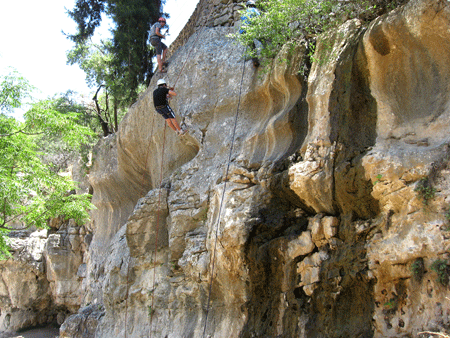 |
|
Photo: Gila
Yudkin |
|
Israeli youth rappelling down into
the valley of Gehenna, 2012 |
|
|
Postscript November 2024 –
New suspension bridge over the
Valley to Hell |
|
| Since
last July there is a new 660 foot (202 meter)
pedestrian bridge over the Valley of Gehenna
connecting the slopes of the Ben Hinnom Valley to
Mount Zion. With astounding views over the valley
itself and southern portion of the Mount of Olives
and the biblical Mount of Anointment, you can now
open your Bible to Jeremiah about the abominations
of child sacrifice or to the Gospel of Mark (chapter
9) where Jesus warns his disciples not to stumble so
as not to fall into the fires of hell (Gehenna in
the original Greek manuscripts). |
|
 |
|
Photo: Gila
Yudkin |
|
202 Meter Suspension Bridge over
the Valley to Hell |
|
| And it’s
free! And fun! Although not recommended for those
with fear of heights – the bridge sways with the
wind! |
|
|
 |
|
Photo: Bette
Arielli |
|
In the Valley of Ben Hinnom
(Gehenna) with the Mt of Olives in the background |
|
|
 |
|
Photo: Gila
Yudkin |
|
Camels munching pomegranate
branches below the hanging bridge |
|
| |
 |
Gila
Yudkin, a Connecticut Yankee
guiding in King David’s court, has been
leading pilgrims for four decades. On
tour, Gila mixes fun, fantasy and facts with
a passion for archeology and Bible. If
she could choose anyone from past or present
to guide, it would be Mark Twain. When Mark Twain visited Jerusalem in 1867,
he says its population numbered 14,000
souls. (Today it's about 900,000!)
When Mark Twain walked along Gehenna en route to the
Garden of Gethsemane in the Kidron Valley,
he smelled no smoke, nor did he witness
child sacrifice. He did, however, make
a number of
remarkable observations about
Jerusalem's Old City, such as its
knobbiness, its alley cats and the
whereabouts of Veronica's handkerchief. |
|
Selfie on the bridge over
the Valley to Hell |
|
|
|
|
Across from the Valley of
Gehenna lies
Mount Zion where
the headless body of
Sir Flinders Petrie is buried in
the Protestant Cemetery. Read why he
is important and why he is headless! |
|
|
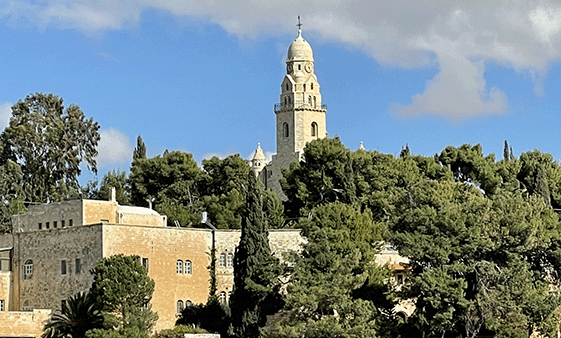 |
|
Photo: Gila
Yudkin |
|
Across from the Valley of
Gehenna is the
Protestant Cemetery on Mount
Zion
shaded by the trees below the tower of the
Dormition Abbey |
|
|
|
If you are planning to visit the Holy Land,
you will be confronted everywhere – in
churches and synagogues, signposts and
doorways, outdoor bazaars and souvenir shops
-- with perhaps some unfamiliar icons.
Do you know the story behind the menorah,
the Jerusalem cross, the Jesus boat, the
hamseh and the mezuzah? If not, you'll
want to check out
Gila's Top Ten
Holy Land Icons. |
|
|
|
Copyright 2012, 2024 Gila Yudkin. Permission
needed for any reuse. |
|
|
|
More Jerusalem: |
|
|
|
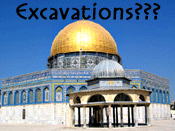 |
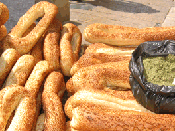 |
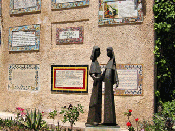 |
|
Temple Mount excavations? |
Holy land spice |
Mary meets Elizabeth |
|
|
|
|
|
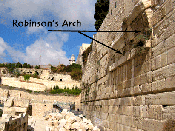 |
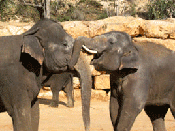 |
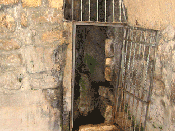 |
|
Great place to read Luke 2 |
Fun at the biblical zoo |
Hezekiah's Tunnel |
|
|
Another way of experiencing Jerusalem is to
walk its ramparts like Nehemiah did. You’re
invited to check out, “Let’s
walk the Old City Ramparts.”
If you are an adventurer at heart and would
like to explore Jerusalem on your own, order
Gila’s up-to-date unorthodox guide, “Explore
Jerusalem’s Soul” with
suggestions of the top ten roof-top views,
the top ten inspiring places to study
Scripture, the ten least-known churches
worth visiting and the ten top restaurants
serving Middle Eastern “soul-food.” |
|
|
|
|
|
GILA
YUDKIN
•
TCHERNIKOVSKI
64A
•
JERUSALEM
•
ISRAEL
gila@itsgila.com
HOME
•
HOLY
LAND
HEROINES •
TIPS
FOR TOURS •
ABOUT GILA
|
|

